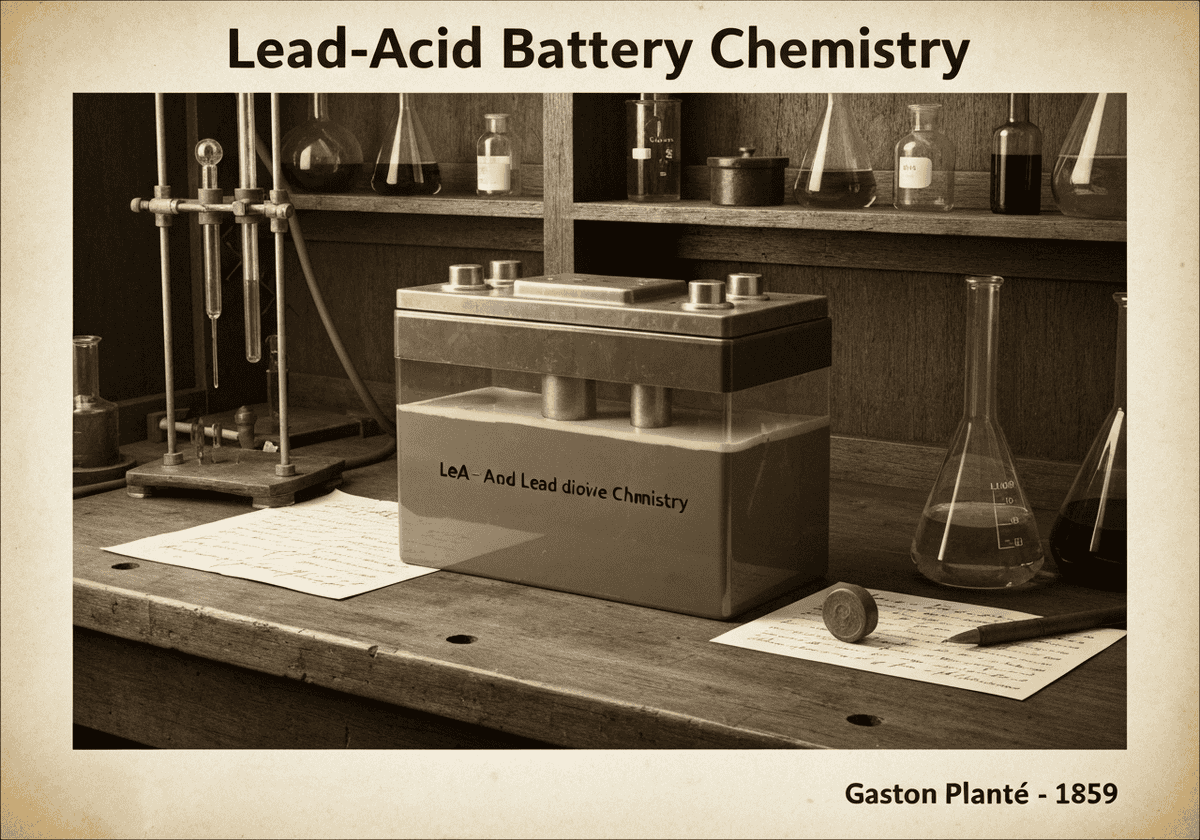首款商业化成功的可充电电池。它采用铅 (Pb) 阳极、二氧化铅 (PbO₂) 阴极和硫酸 (H₂SO₄) 电解质。放电过程中,两个电极均转化为硫酸铅 (PbSO₄),并消耗硫酸。该过程可通过施加外部电流实现化学可逆,使其成为一种实用且可靠的储能系统。


(generate image for illustration only)
首款商业化成功的可充电电池。它采用铅 (Pb) 阳极、二氧化铅 (PbO₂) 阴极和硫酸 (H₂SO₄) 电解质。放电过程中,两个电极均转化为硫酸铅 (PbSO₄),并消耗硫酸。该过程可通过施加外部电流实现化学可逆,使其成为一种实用且可靠的储能系统。
The lead-acid battery’s operation is based on a reversible double sulfate reaction. In a fully charged state, the negative electrode is pure, spongy lead (Pb), and the positive electrode is lead dioxide (PbO₂). Both are immersed in an electrolyte of approximately 37% sulfuric acid (H₂SO₄) in water.
During discharge, the following half-reactions occur. At the anode: [latex]Pb(s) + HSO_4^-(aq) \rightarrow PbSO_4(s) + H^+(aq) + 2e^-[/latex]. At the cathode: [latex]PbO_2(s) + HSO_4^-(aq) + 3H^+(aq) + 2e^- \rightarrow PbSO_4(s) + 2H_2O(l)[/latex]. In both reactions, the active material is converted to lead sulfate, and sulfuric acid is consumed while water is produced. This consumption of sulfuric acid causes the specific gravity (density) of the electrolyte to decrease, providing a simple and effective way to estimate the battery’s state of charge using a hydrometer.
To recharge the battery, an external voltage is applied, forcing the reactions to run in reverse. Lead sulfate on the negative plate is converted back to lead, and lead sulfate on the positive plate is converted back to lead dioxide. The water is consumed, and sulfuric acid is regenerated, increasing the electrolyte’s specific gravity. Despite its low energy-to-weight ratio and the environmental hazards of lead, the technology’s low cost, reliability, and ability to supply high surge currents have ensured its continued widespread use, especially in automotive applications.
迎接新挑战
机械工程师、项目、工艺工程师或研发经理
可在短时间内接受新的挑战。
通过 LinkedIn 联系我
塑料金属电子集成、成本设计、GMP、人体工程学、中高容量设备和耗材、精益制造、受监管行业、CE 和 FDA、CAD、Solidworks、精益西格玛黑带、医疗 ISO 13485
铅酸电池化学
(如果日期不详或不相关,例如 "流体力学",则对其显著出现的时间作了四舍五入的估计)。
相关发明、创新和技术原理
{{标题}}
{%,如果摘录 %}{{ 摘录 | truncatewords:55 }}
{% endif %}